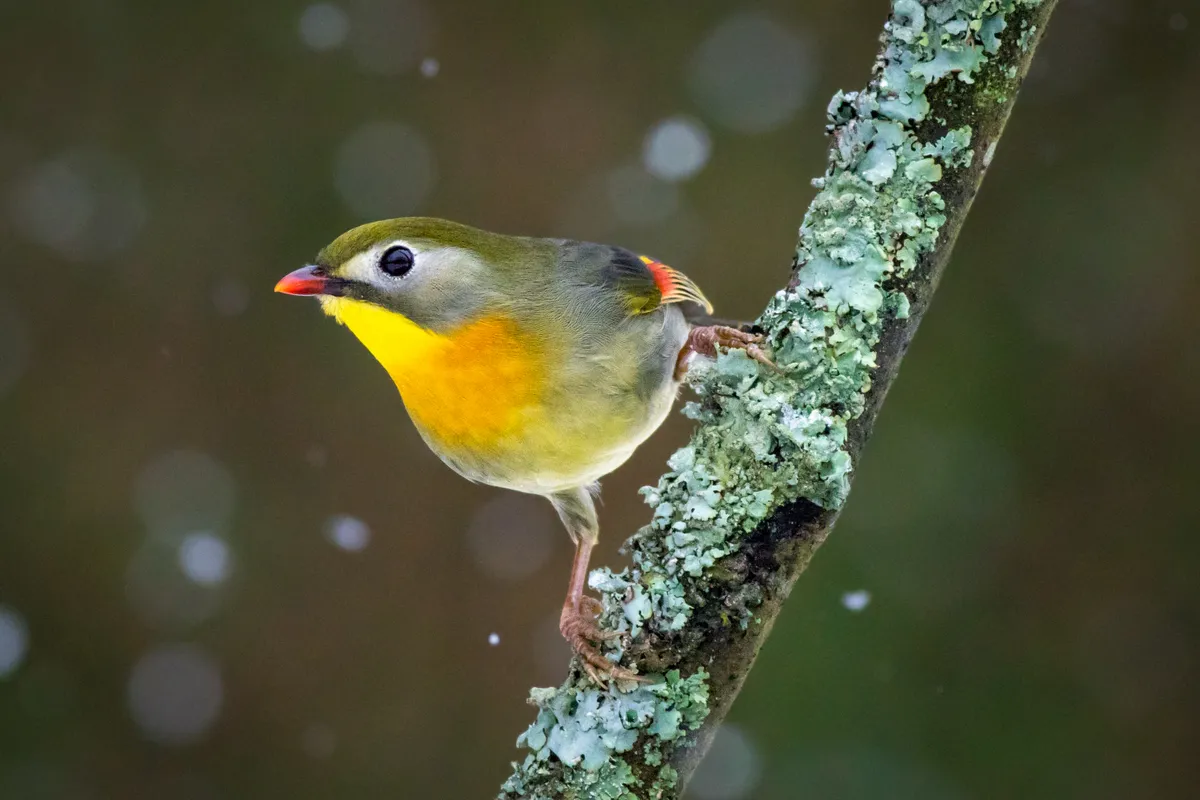The red-billed leiothrix is a colourful and pretty small bird that could soon become a regular sight in parts of Britain, like the non-native but now-familiar ring-necked parakeet.
A new study led by scientists at the UK Centre for Ecology & Hydrology (UKCEH) examined the current sightings to date of this songbird, which is native to southern China and the Himalayas.
The species has become established in Japan and Hawaii, and European countries such as France, Spain, Portugal and Italy.
The majority of the 16 sightings in the UK (between 2019 and 2022) have come from Wiltshire and Somerset, but there are some records from elsewhere, including south Wales, Merseyside and Kent.
These sightings may be due to accidentally released individuals, as the species is kept in captivity (and is known as the pekin robin in the caged bird trade), and they may not be breeding in the wild yet. An import ban on this species came into effect in 2005, and it is no longer abundant as a captive bird here.
It's thought that our milder winters, due to climate change, could help the species become established here, and the widespread use of bird feeders in gardens would provide a reliable food source.

The song of the red-billed leiothrix is comparable to that of the blackbird, robin and blackcap, and its nesting and feeding habits are also similar to these birds.
“If the red-billed leiothrix becomes established in Britain, they could soon be a familiar sight in our gardens, parks and woodland, with their rich song altering the dawn chorus as we know it today,” Dr Richard Broughton who led the study.
“Our study is the very first assessment of this species in Britain, and raises awareness of the fact that the birds have been sighted in Britain. The potential for the red-billed leiothrix to become established here had seemed very low, but the cluster of records in southern England suggest we need to take it seriously as a potentially new invasive species.”
Currently it's thought that the red-billed leiothrix could compete with native birds for food, nesting locations and habitat. Once established as breeding population, the species can reach high densities as they nest communally.
The scientists are encouraging members of the public to submit any sightings of the red-billed leiothrix via the BirdTrack app or the iRecord app.
Main image: A red-billed leiothrix photographed at a bird feeder in Wiltshire, in May 2020. © P Mumby
